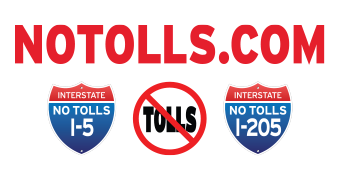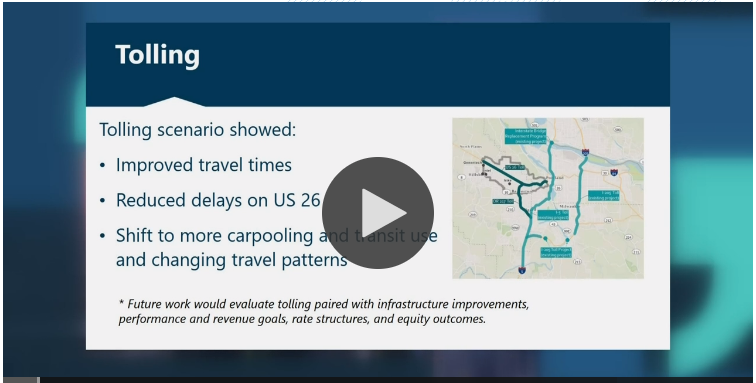Big regional employers and population growth in Washington County have made gridlock west of Portland an increasing issue. Officials think tolling is one solution.
By Pat Dooris, Jamie Parfitt
KGW News, March 26, 2024
PORTLAND, Ore. — Tolling in Oregon has become a bit like Schrödinger’s cat — at any given time, it’s simultaneously alive and dead, at least until the legislature decides to take a closer look. And when the topic returns, it may pop up on the Portland metro’s west side before it returns to the east.
Earlier this month, Gov. Tina Kotek directed the Oregon Department of Transportation to drop tolling plans that were well underway for I-205 and I-5 around the Portland metro area, as public resistance to the idea grew. She asked the legislature to figure out a long-term fix for ODOT’s increasing financial troubles.
The Story’s Pat Dooris recently spoke with the director of ODOT about those money troubles and some of the potential fixes. He was clear that tolling is not off the table in Oregon, and it will likely be paired with some kind of pay-by-mile fee to compensate for sagging fuel tax revenue.
Dooris later sat down with Brendan Finn, the agency’s director of urban mobility. Up until Kotek’s edict, Finn was the person in charge of ODOT’s push for tolling over the last few years.
One of Finn’s duties is to study particular traffic trouble spots. And one he’s been looking at lately involves the west side of the Portland metro area, around U.S. 26 and Oregon 217, which have the dubious distinction of handling traffic for some of the region’s largest employers.
“One of our biggest economic drivers is what’s happening out there in Washington County,” Finn said. “With Intel, the semiconductor industry, Nike, Genentech — lots of huge employers that are great employers. We’re also focusing more housing out in that area as well. So as you might imagine, that’s going to exacerbate the transportation system, particularly in the Sunset corridor and the 26.”

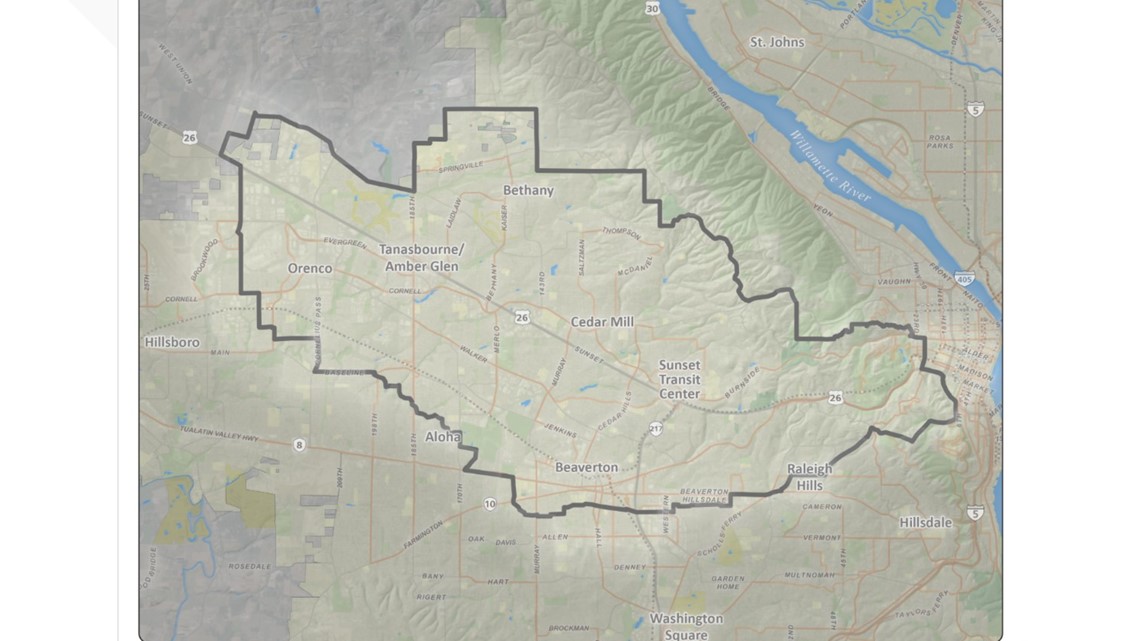
ODOT conducted a study along with Metro, local city governments, transit agencies and community-based organizations to look at what could help reduce congestion in that area, Finn said. They learned that many people live in the Gresham area, but commute over to the western side of Washington County.
“So where are those options? What’s going to move the dial to increase mobility in those areas?” Finn continued. “So (the study) recommended a suite of different projects — to have further study, to refine the numbers — and then look at how we move forward on that. So they took a look at a lot of pieces there … so that’s an important piece, I feel that that corridor is going to be an important one for us to take a really in-depth look at. The importance economically and also an important place where we need to have new housing which is a big priority for the governor as well.”
The word missing from that quote is tolling — officials think that the solution to the congestion problem will include tolling. But after Kotek told ODOT to pump the breaks on their prior plans, the agency is being much more careful about how and where they bring it up.
“Well, the conversation we’re having with the community there,” Finn said. “They’re gonna get to see the data and evaluate them and make that decision themselves.”
Trading off traffic and tolls
Both Metro and ODOT have been studying the idea of tolling on the west side for a few years. They began meeting with local elected leaders and business executives back in 2022.
The biggest issue they identified was one of growth. Washington County is now home to roughly 630,000 people, and contains some of the biggest employers in Oregon. As a result, gridlock is a huge problem on U.S. 26 and OR 217 in that area during certain times of day.
ODOT has already run a scenario where they placed a toll on U.S. 26 between Nike and Intel, as well as on OR 217. According to that model, the tolls improved travel times and reduced delays as people shifted to carpooling and different travel times.

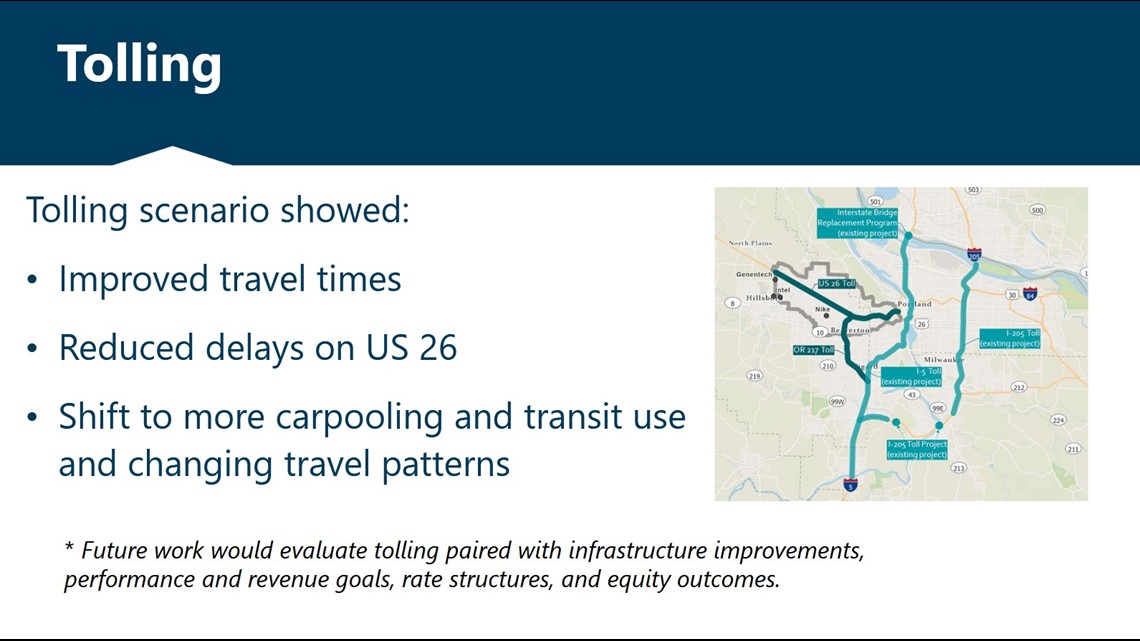
At the end of November, ODOT floated the idea of a new tunnel that would connect Kaiser Road to U.S. 30 by going under the West Hills and Forest Park, as well as a new bridge across the Willamette River that would connect U.S. 30 to Lombard Street in North Portland. They’re also considering widening Barnes Road up to five lanes over the West Hills.
It’s not clear that any of those plans will come to fruition, at least not anytime soon. The committee discussing them was made up of a mix of government and industry representatives, at least partially just brainstorming what could ideally be done to ease congestion.
Some of the ideas are more modest, and may help to sell people who live on the west side on the idea of tolling. A list of transportation investments would be paired with tolls to sweeten the pot, so to speak.

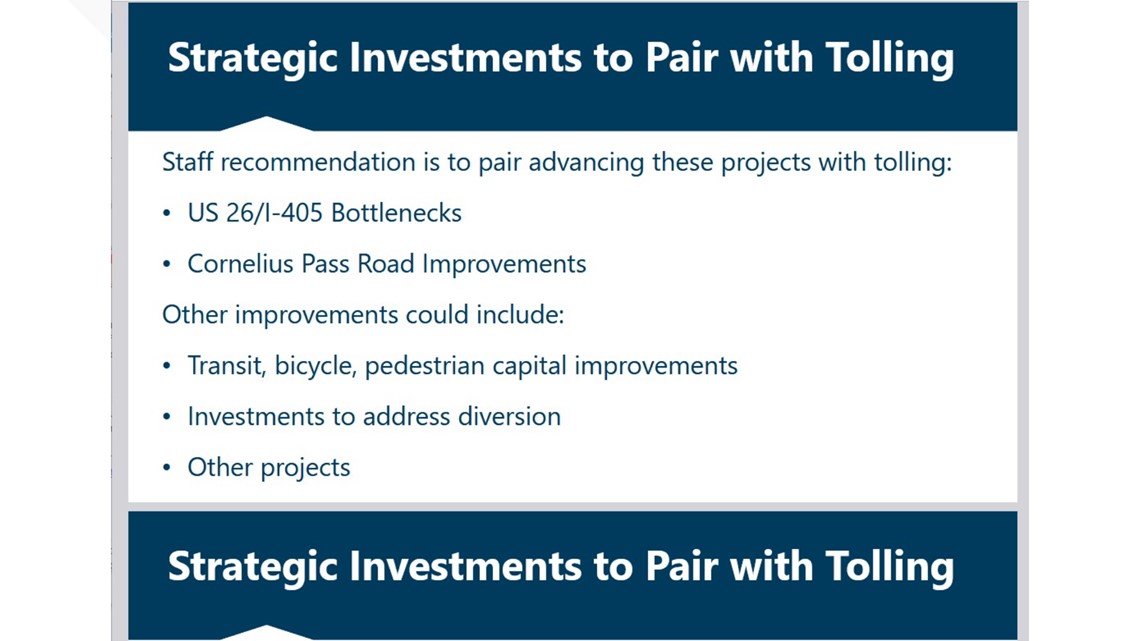
But even during this pie in the sky brainstorm session, some people brought up concerns.
“We’re all wearing bruises — you’re not the only one — regarding tolling,” one person said. “As we consider what we’re putting down here, we have to think about the communication piece as well and what it says to the people that will be looking to this. So, ah, frankly I’m a little nervous about saying, ‘Let’s study tolling’ without doing these things. Because I don’t know that that sends the right message.
“In my mind, of course you would do it that way, and that would be the approach. But I do think as far as perspective, we need to be cognizant of the discussions that are going to be had. And they’re not going to be easy ones.”
Finn echoed ODOT Director Kris Strickler when he said that tolling proposals will now be citizen-led. In the meantime, the agency is going to be ready to go when those discussions do come up.
“That’s probably the recipe for success on such an effort, is to have it come from the communities that are there, and then have them understand the benefits and have them be the ones that advocate for that as opposed to the agency doing it,” Finn said.
“From the top down,” The Story’s Pat Dooris offered. “So it would be the reverse of what we saw earlier.”
“Pretty much,” Finn said.
